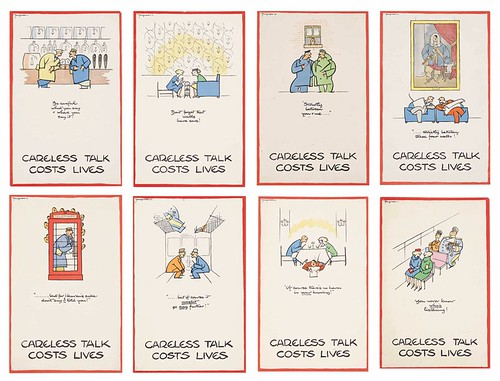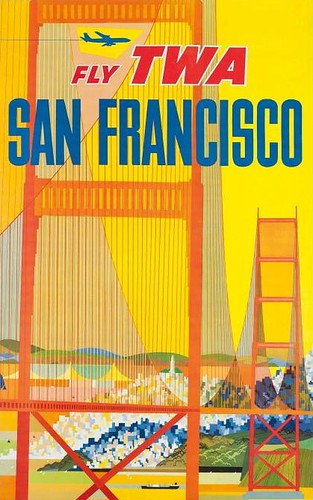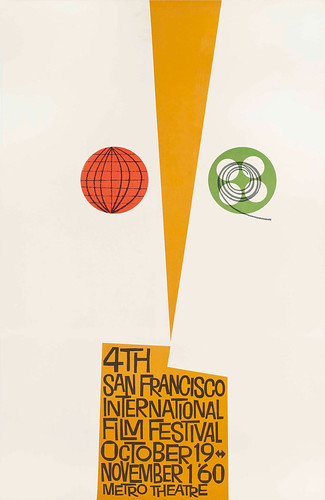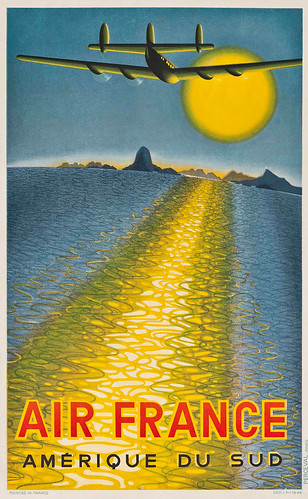Tuesday, 11:50pm
16 July 2013
Mid-century matters
Mid-twentieth century posters catch a contemporary mood at Christie’s vintage poster auction

At a recent Christie’s sale of vintage posters, the most popular represented campaigns from the mid-twentieth century, writes Holly Harris.
There were items such as a set of Fougasse’s Careless Talk Costs Lives posters – used on London transport during the Second World War – and David Klein’s 1956 photolithographic TWA poster for New York, acquired by MoMA in 1957. Klein’s designs formed the face of TWA – a brand coupled with glamour and glitz through the company’s eccentric owner, Howard Hughes.
A set of Fougasse’s Careless Talk Costs Lives posters reached £7500; around five times the estimated value.
Top: David Klein’s 1956 photolithographic TWA poster sold for £3000. The Times Square image was revived in 2000 when Orbitz travel commissioned Klein to recreate his 1950s posters.
Christie’s nineteenth and twentieth century poster specialist, Sophie Churcher, said that the increased popularity of this era ‘may be linked to the current trend in mid-century furniture for home interiors.’ This trend is not only reflected in the sale of furniture and posters but also in current fashion – seen especially in Louis Vuitton’s current Spring / Summer collection.
David Klein, San Francisco Fly TWA, ca. 1958.
Also popular was a 1960 Saul Bass poster for the San Francisco film festival. Bass’s style has subsequently become synonymous with the 1950s and early 60s and has influenced graphic design right through to the present day. Probably one of the best known contemporary demonstrations of Bass’s influence is the opening title sequences for Catch Me If You Can (2002) and the American television programme Mad Men.
Saul Bass poster for the fourth San Francisco International Film Festival at Metro Theatre, San Francisco, 1960.
The most recent poster for sale was a signed copy of the poster depicting Uma Thurman (photographed by Firooz Zahedi) for the 1994 film Pulp Fiction. At the time the original one-sheet was printed, Lucky Strike disputed the use of their cigarette packet in the image and Miramax recalled the small run that they had distributed. Few had anticipated the film’s success and the posters are now known as ‘Lucky Strikes’ among collectors.
A 1949 poster for Air France by Franco-Hungarian artist Victor Vasarely sold for £800. Though Vasarely is better known in the art world than in advertising, his images lend themselves well to mechanical reproduction.
Although a stylistic anomaly, Vasarely’s realism here is achieved primarily through textural change. The undulating ripples as well as the use of the same hues in the sky, land and sea are a nod to the 1948 style that he developed in Gordes. Vasarely noted that ‘never can the eye identify to what a given shadow or strip of wall belongs: solids and voids merge into one another, forms and backgrounds alternate … ’
Holly Harris, art historian, researcher and writer, London
Eye is the world’s most beautiful and collectable graphic design journal, published quarterly for professional designers, students and anyone interested in critical, informed writing about graphic design and visual culture. It is available from all good design bookshops and online at the Eye shop, where you can buy subscriptions, back issues and single copies of the latest issue. You can see what Eye 85 looks like at Eye before You Buy on Vimeo.




